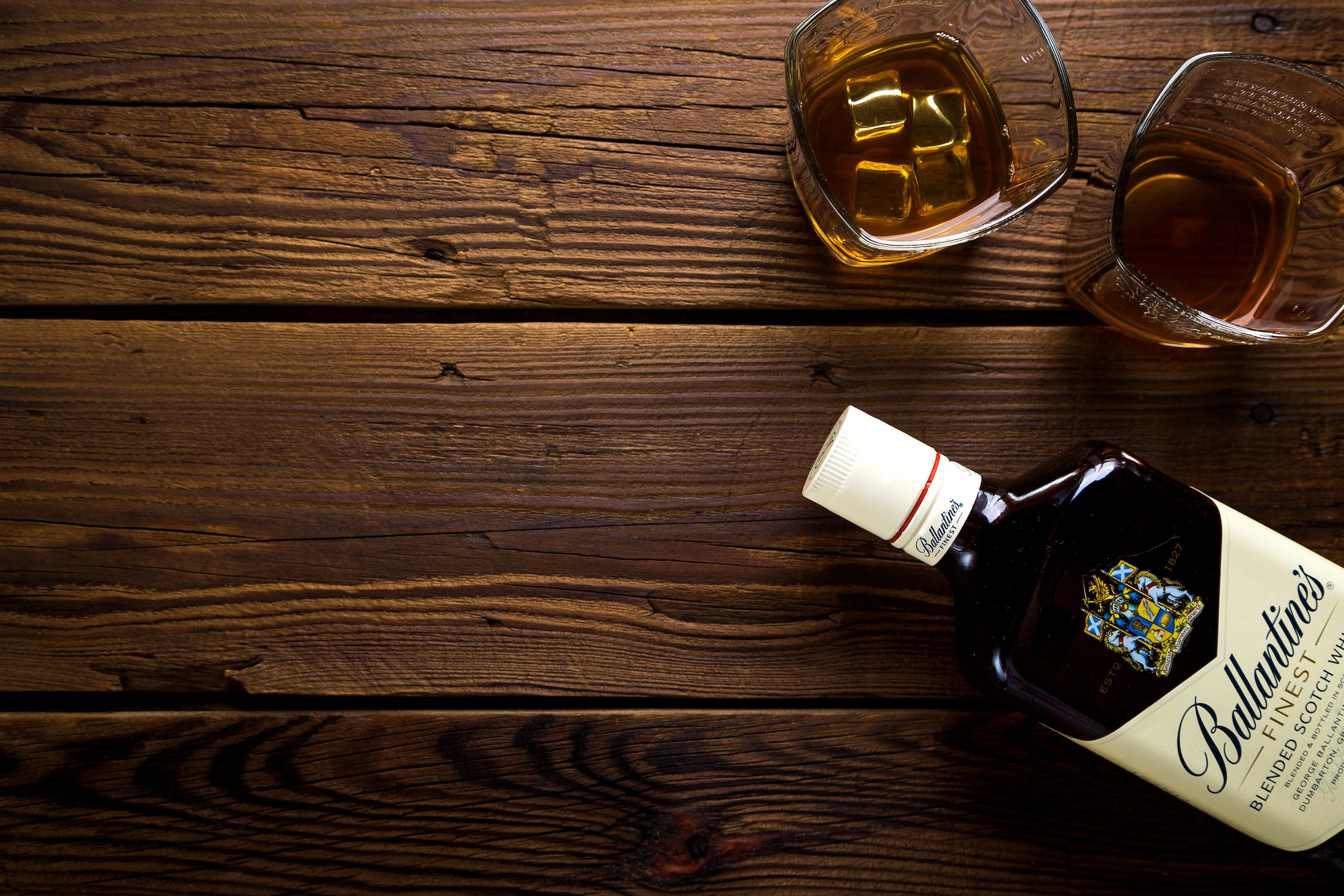Addiction | 4 min read
What are the Different Types of Alcohol?
Medically Reviewed By

On July 22, 2025
Written By
On December 19, 2022

What you will learn
- The different types of alcohol include three broad categories based on the chemical structure.
- Types of alcoholic drinks are determined based on the production process and alcohol content.
- The form and potency of the alcohol you consume can affect how your body reacts.
- Alcohol use in any form can build tolerance and dependence quickly causing withdrawal symptoms if you stop using it.
Alcohol is one of the most widely consumed substances in the world, but not all alcohol is the same. While they’re all made by fermenting different types of fruits, vegetables, and grains to create ethanol, each has a unique process that affects the flavor and the alcoholic content. Understanding the differences between the types of alcohol can help you recognize the risks and make informed choices.
What Is Alcohol?
What we refer to as “alcohol” is actually ethanol, the only type of alcohol that’s safe to consume in moderation. Ethanol is produced through the fermentation of yeast, sugars, and starches. However, there are other forms of alcohol, such as isopropyl alcohol (rubbing alcohol) and methanol, that are toxic and used in industrial or cleaning products, not as beverages.
The 3 Main Types of Alcohol & Alcoholic Compounds
The different types of alcohol include three broad categories based on the chemical structure:[1]
- Ethanol, or ethyl alcohol, is used in alcoholic beverages and is safe for consumption. Ethanol is also found in denatured alcohol, which is not safe to consume.
- Isopropanol, also known as isopropyl alcohol, is another familiar type of alcohol used in disinfectants, such as hand sanitizers. This is toxic and shouldn’t be consumed.
- Methanol, or methyl alcohol, a type of alcohol that’s used as fuel, antifreeze, and as a solvent. Methanol is highly toxic and should never be consumed.
Types of Alcoholic Drinks
It’s more accurate to discuss the forms of ethanol that are found in alcoholic beverages. These forms vary based on the production process and alcohol content.
Alcohol by volume (ABV) measures the number of milliliters (mL) of pure ethanol in every 100 mL or 3.4 ounces (oz) of fluid (fl), expressed as a percentage.[2] ABV is usually used for undistilled alcohol, while alcohol proof is often used for distilled spirits.
Undistilled Alcohol
Types of alcohols are produced by fermenting sugars and starches without the use of distillation. They typically have a lower alcohol content.[3]
- Beer: Made from fermented grains like barley or wheat. Beer has about 4-8% ABV.
- Hard cider: Made from fermented apple or fruit juice. Hard cider has 2-6% ABV.
- Wine: Made from fermented grapes. Wine has up to 14% ABV.
- Mead: Made from fermented honey and water. Mead has 10-14% ABV.
- Sake: A Japanese alcoholic beverage made from fermented rice, brewed similarly to beer but categorized as a rice wine. Sake typically has an ABV of 12-15%.
Distilled Alcohol
Distilled alcohols go through an additional step to concentrate ethanol, leading to a more potent finished product with a higher ABV. The main categories of distilled spirits typically include vodka, whiskey, gin, rum, tequila, and brandy. Liqueurs are often considered a separate category due to their added sugar and flavorings.:[4]
- Vodka: Neutral spirit distilled from grains or potatoes with an ABV of 35-50%, 70-100 proof.
- Whiskey: Aged spirit from fermented grain mash with an ABV of 40-50%, 80-100 proof.
- Rum: Made from sugarcane byproducts like molasses with an ABV of about 40%, 80 proof.
- Tequila: Made from the blue agave plant in Mexico with an ABV of about 40%, 80 proof.
- Brandy: Distilled wine or fortified wine, often aged, with an ABV of 35-60%, 70-120 proof.
- Gin: Vodka-like based liquor with botanicals and an ABV of 35-55%, 70-110 proof.
- Absinthe: Anise-flavored spirit that’s highly potent with an ABV of 40-90%, 80-180 proof.
- Everclear: Grain alcohol that is extremely high proof and potentially dangerous, typically sold in 60%, 75.5%, 94.5%, or 95% ABV versions, depending on state regulations.
Distilled vs. Undistilled Alcohol
The difference between distilled and undistilled alcohol lies in the process. Distilled alcohol is produced by fermenting and then purifying it through a distillation process, resulting in a higher alcohol content and a more concentrated form. Many distilled alcohols are used in cocktails or mixed drinks.
Undistilled alcohols are only fermented, such as beer and wine. They contain more natural sugars derived from the fermented ingredients and typically have lower alcohol levels.
As expected, drinking distilled forms of alcohol can lead to intoxication much faster than undistilled options, even in smaller quantities.
How Do Different Forms of Alcohol Affect Your Body?
The form and potency of the alcohol you consume can affect how your body reacts. Beer, wine, and other undistilled alcohols have milder sedative effects and cause intoxication more slowly. Spirits, which are commonly used in cocktails and mixed drinks, can cause rapid intoxication and may put more stress on the liver to process.
High-proof liquors like Everclear and other grain alcohol can be dangerous. They’re extremely potent and may carry a greater risk of severe intoxication, blackouts, and possible alcohol poisoning.
Risks and Dangers of Various Alcohol Forms
All forms of alcohol have risks, but the level of danger increases with alcohol concentration.
Beer and hard cider are often viewed as “safer,” but they can cause problems if you drink too much. Binge drinking beer or hard cider can cause dependence and alcohol-related health issues, like any other alcoholic beverage.
Wine is another form of alcohol that’s seen as “harmless,” especially since moderate consumption can have health benefits from the antioxidants in the grapes. However, heavy use of wine can damage the liver and negatively affect your health.[5]
Spirits have a high ABV that can make it easier to overconsume, particularly if you drink it on its own without a mixer like fruit juice or soda. Similarly, Everclear and Absinthe are extremely high potency and can lead to alcohol poisoning.
Is One Form of Alcohol More Addictive Than Others?
While ethanol is present in all alcoholic beverages, no specific type is inherently more addictive than another; addiction risk is more influenced by total ethanol consumed, frequency of use, and individual vulnerability factors. Alcohol use in any form can build tolerance and dependence quickly, however, causing withdrawal symptoms if you stop using it.
That said, addiction is influenced by psychological, genetic, and environmental factors.[6] If you are at risk for alcohol use disorder (alcohol addiction), even low-ABV drinks like beer can be habit-forming.
Make Informed Choices About Different Types of Alcohol & Alcohol Consumption
Understanding the different forms of alcohol, from their production and alcohol content to their effects on the body, can help you make safe decisions regarding your alcohol consumption and addiction risks. If you or a loved one is struggling with alcohol addiction, you don’t have to do it alone.
Frequently Asked Questions about Alcohol Use
Not necessarily. A 12-oz beer, 5-oz wine, and 1.5-oz shot of liquor all contain about the same amount of ethanol.[7] The difference lies in how quickly these different drinks are typically consumed and how much people tend to consume. The concentration of alcohol in beer is lower than in liquor, so it’s easier to overconsume a mixed drink with liquor in it than a beer.
Dark spirits, such as whisky and brandy, contain more congeners, or byproducts of the fermentation and distillation process, which may exacerbate hangovers compared to clearer drinks like vodka or gin.[8] However, other factors can influence whether you have a hangover and how bad it is, including your age, general health, gender, and how much alcohol you consumed.
Everclear is among the most potent legal alcohols sold in the U.S. It has an ABV of up to 95%, leading it to be banned in several states.[9]
Ascendant New York Editorial Guidelines
Here at Ascendant New York, we understand the importance of having access to accurate medical information you can trust, especially when you or a loved one is suffering from addiction. Find out more on our policy.
[1] T. Litovitz (n.d.). The alcohols: Ethanol, methanol, isopropanol, ethylene glycol. Pediatric clinics of North America. https://pubmed.ncbi.nlm.nih.gov/2870460/
[2] Understanding alcohol content. Understanding Alcohol Content | Washington State Liquor and Cannabis Board. (n.d.). https://lcb.wa.gov/education/understanding_alcohol_content
[3] U.S. Department of Health and Human Services. (n.d.-b). What is a standard drink?. National Institute on Alcohol Abuse and Alcoholism. https://www.niaaa.nih.gov/alcohols-effects-health/what-standard-drink
[4] U.S. Department of Health and Human Services. (n.d.-b). What is a standard drink?. National Institute on Alcohol Abuse and Alcoholism. https://www.niaaa.nih.gov/alcohols-effects-health/what-standard-drink
[5] Alcohol and Heart Health: Separating Fact from Fiction (2024, June 20). Hopkins Medicine. Retrieved from https://www.hopkinsmedicine.org/health/wellness-and-prevention/alcohol-and-heart-health-separating-fact-from-fiction
[6] NIDA. 2023, March 22. New NIH study reveals shared genetic markers underlying substance use disorders. Retrieved from https://nida.nih.gov/news-events/news-releases/2023/03/new-nih-study-reveals-shared-genetic-markers-underlying-substance-use-disorders
[7] U.S. Department of Health and Human Services. (n.d.-b). What is a standard drink?. National Institute on Alcohol Abuse and Alcoholism. https://www.niaaa.nih.gov/alcohols-effects-health/what-standard-drink
[8] J;, R. D. (n.d.). The role of beverage congeners in hangover and other residual effects of alcohol intoxication: A Review. Current drug abuse reviews. https://pubmed.ncbi.nlm.nih.gov/20712591/
[9] Everclear Legal States 2025. worldpopulationreview.com. (n.d.). https://worldpopulationreview.com/state-rankings/everclear-legal-states




